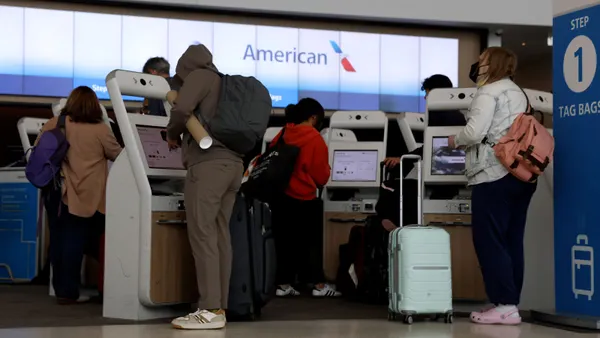Spotify will allow employees to choose where they're most comfortable working, in a long-term commitment to hybrid work, the company announced Friday. The news follows a similar announcement from Salesforce on Wednesday.
More organizations are expected to follow suit, as half of companies ditch or loosen location requirements in all new hiring, according to data from iCIMS. This allows companies to source talent from a larger pool.
Companies are already familiar with many tools supporting "work from anywhere," such as videoconferencing, productivity bundles and file sharing tools. They helped support operations for companies the world over.
But there are tools missing from the tech stack that could help companies make hybrid work sustainable long term.
According to Adam Preset, senior director, analyst for digital workplace at Gartner, gaps in company's technology tool set include:
-
Virtual collaboration: These tools emulate the physical elements that helped co-located workers brainstorm or visually collaborate on problems. Think whiteboards, sticky notes or flip charts.
-
Virtual office: While chat apps denote when a worker is available, organizations lack serendipitous hallway encounters or unstructured meetings. Some solutions rehash the office experience through VR or AR technology.
-
Virtual events: As the possibility of in-person events, tools designed for recreating the event experience allows businesses to hold training and other kinds of events, "the production quality of those kinds of activities really matters," Preset said.
"Those are emerging areas of development, and they are places where companies need to experiment," in order to determine what the right fit is, said Preset.
"There's a big gap in providing that break-fix support to people when they're in their homes."

Andrew Hewitt
Analyst at Forrester
Client inquiries regarding the use of these three tool groups has risen about 300% in the last year, according to Preset. "To see that sort of increase really shows that there's a market that people are more interested in, they're really trying to solve some very difficult problems and this kind of software is helpful."
The IT support challenges
Adoption of these tool sets adds new tasks to the IT support team, which spent the past year dealing with a combination of increased stress on networks, a shift to digital wherever possible and procuring hardware to keep businesses running.
With long-term hybrid work as the objective, more digital tools mean more troubleshooting. It also makes having insight into end-user experience more complex, and businesses have been looking more into remote PC access tools in order to help IT respond, said Forrester analyst Andrew Hewitt.
"Not a lot of organizations have that," Hewitt said. "But I'm finding more and more organizations are looking to make that investment to help on the IT support side."
End-user experience management tools can also help IT teams track the overall performance of devices and applications, providing metrics and data to inform decisions, said Hewitt.
Some solutions that enable an efficient hybrid work model require higher-end equipment to work properly. Others require additional hardware such as a second monitor or VR headsets.
If visual collaboration is a large part of someone's job, such as a design chief, "then just having a tiny laptop screen may not be enough," Preset said. "You might need another display, so you can do your diagramming and process clarification on one screen while conducting the meeting on another screen, or maybe you need a separate tablet with a pen."
The hybrid model of work also leads companies to rethink the "break-fix" approach to IT support, as workers hop back and forth between home and the office.
"There's a big gap in providing that break-fix support to people when they're in their homes," said Hewitt. "The big change with the hybrid environment is that all of a sudden you're going to need to have both: you're going to need to have the in-office depot for fixing devices, but you're also going to need to have something that's going to help the remote workers.















